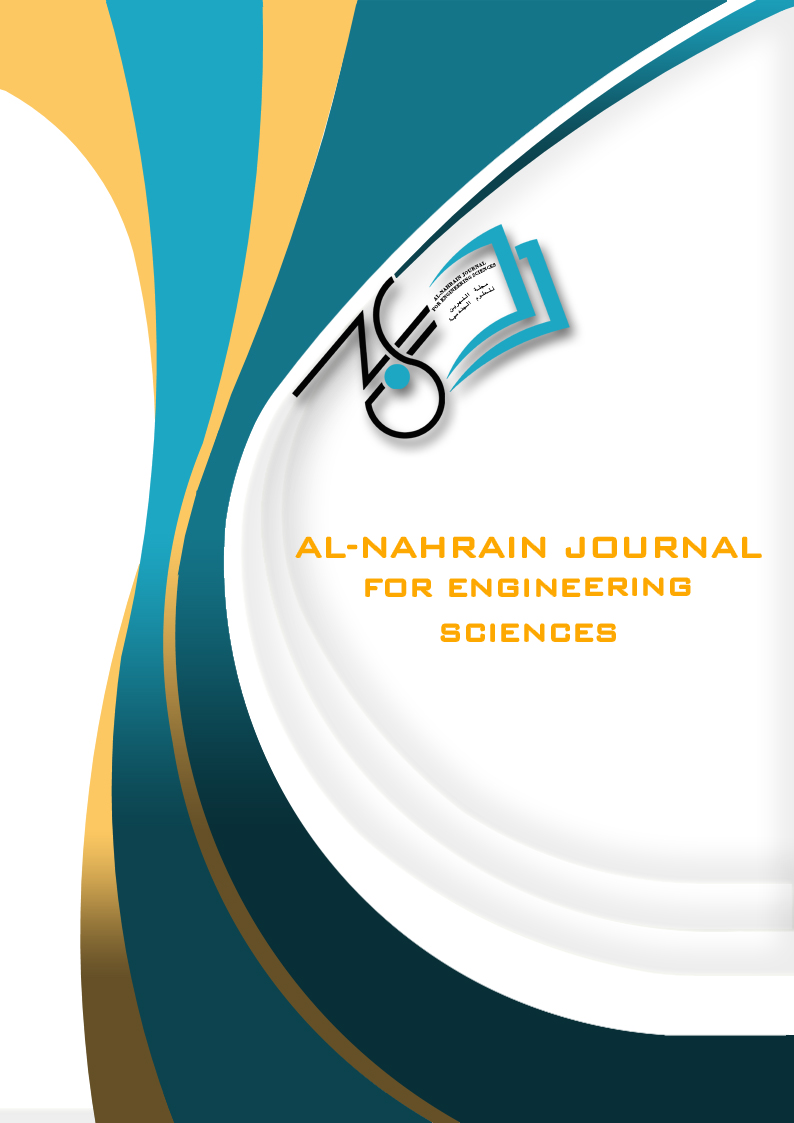The Effect of Wind Loading on the Growth of Crack Propagation in Aircraft Wing
DOI:
https://doi.org/10.29194/NJES.28020205Keywords:
Dynamic crack propagation, Computational fluid dynamics, Non-preoperational multi-axial cyclic load, AL7075-T6 alloy, Angle of attack (AOA)Abstract
Throughout the flight, aircraft wings continuously struggle against various forces: the forward thrust from the engine, the drag pulling them backward, and sudden turbulence from storms. In contrast, these forces are essential for maintaining aircraft stability. With time, the cyclic stresses can result in the formation and propagation of minuscule cracks in the wings. Cracks growing on the aircraft wing surface manufactured from alloy AL7075-T6, have been investigated when subjected to non-preoperational multi-axial cyclic loading. The results have been evaluated using two methods, numerical simulations and theoretical calculation to evaluate dynamic crack propagation crack growth per cycle (da/dN) at angles of attack 5° and 10°. The results showed that the dynamic crack propagation increases with an increase in the crack length. It was found that the values of the dynamic crack propagation rate at the angle of attack 5⁰ are smaller than the values at the angle of attack 10⁰.
Downloads
References
S. S. T. Yau and N. Recho, “Crack Growth and Fatigue”. Springer, 2019. DOI: 10.1007/978-3-030-26604-4
Federal Aviation Administration (FAA), “Pilot's Handbook of Aeronautical Knowledge”, FAA-H-8083-25B, Scientific Reports, 2016. DOI: 10.31236/osf.io/8xq7z
J. B. Kodman, B. Singh, and M. Murugaiah, “A comprehensive survey of open-source tools for computational fluid dynamics analyses,” J. Adv. Res. Fluid Mech. Therm. Sci., vol. 119, no. 2, pp. 123–148, 2024. DOI: 10.37934/arfmts.119.2.123148 DOI: https://doi.org/10.37934/arfmts.119.2.123148
A. Sedmak, “Fatigue crack growth simulation by extended finite element method: A review of case studies,” Fatigue Fract. Eng. Mater. Struct., vol. 47, no. 6, pp. 1819–1855, 2024. DOI: 10.1111/ffe.14277 DOI: https://doi.org/10.1111/ffe.14277
S. Kandwal and S. Singh, “Computational fluid dynamic study of fluid flow and aerodynamic forces on an airfoil,” Int. J. Eng. Res. Technol., vol. 1, no. 7, Sep. 2012. DOI: not available
J. R. R. A. Martins, “Aerodynamic design optimization: Challenges and perspectives,” Comput. Fluids, vol. 239, pp. 100–112, 2024. DOI: 10.1016/j.compfluid.2022.105479 DOI: https://doi.org/10.1016/j.compfluid.2022.105479
B. C. Mathewa *et al.*, “Computational study for improvement of aerodynamic performance of airfoil by changing various aerodynamic properties,” Workshop on Control and Embedded Systems, 2021.
H. Pandeya, D. Fernandes, A. Khandelwal, and D. Mishrab, “Finite element analysis of fatigue and fracture behavior in idealized airplane wing model with embedded crack under wind load,” IOP Conf. Ser.: Earth Environ. Sci., vol. 796, Art. no. 012043, 2021. DOI: 10.1088/1755-1315/796/1/012043 DOI: https://doi.org/10.1088/1755-1315/796/1/012071
S. M. Shohel, N. Kumara, N. Bihala, and M. Mehtaa, “A comparative study of finite element analysis on cantilever beam with different materials subjected to uniformly distributed load,” NeuroQuantology, vol. 20, no. 9, pp. 2230–2236, 2022. DOI: 10.14704/nq.2022.20.9.NQ22956
R. Abdel-Rahman and B. S. Eldin, Engineering Solid Mechanics. CRC Press, 1999.
M. Janssen, J. Zuidema, and R. J. H. Wanhill, Fracture Mechanics, 2nd ed.
F. A. Al-Shamma, “The effect of fatigue on crack propagation in flat plates under buckling, bending and shear,” Jordan J. Mech. Ind. Eng., vol. 3, no. 4, pp. 206–215, 2009.
F. A. Lowenheim, Modern Electroplating, 2nd ed.
D. F. Socie and G. B. Marquis, Multiaxial Fatigue Handbook. Society of Automotive Engineers, Warrendale, PA, 2000.
F. A. Al-Shamma and O. A. Jassim, “Dynamic crack propagation in nano-composite thin plates under multi-axial cyclic loading,” J. Mater. Res. Technol., vol. 8, pp. 4672–4681, 2019. DOI: 10.1016/j.jmrt.2019.07.025 DOI: https://doi.org/10.1016/j.jmrt.2019.08.011
Downloads
Published
Issue
Section
License
Copyright (c) 2025 Shahad Nashat Subhi, Fathi Al-shamma

This work is licensed under a Creative Commons Attribution-NonCommercial 4.0 International License.
The authors retain the copyright of their manuscript by submitting the work to this journal, and all open access articles are distributed under the terms of the Creative Commons Attribution-NonCommercial 4.0 International (CC-BY-NC 4.0), which permits use for any non-commercial purpose, distribution, and reproduction in any medium, provided that the original work is properly cited.














